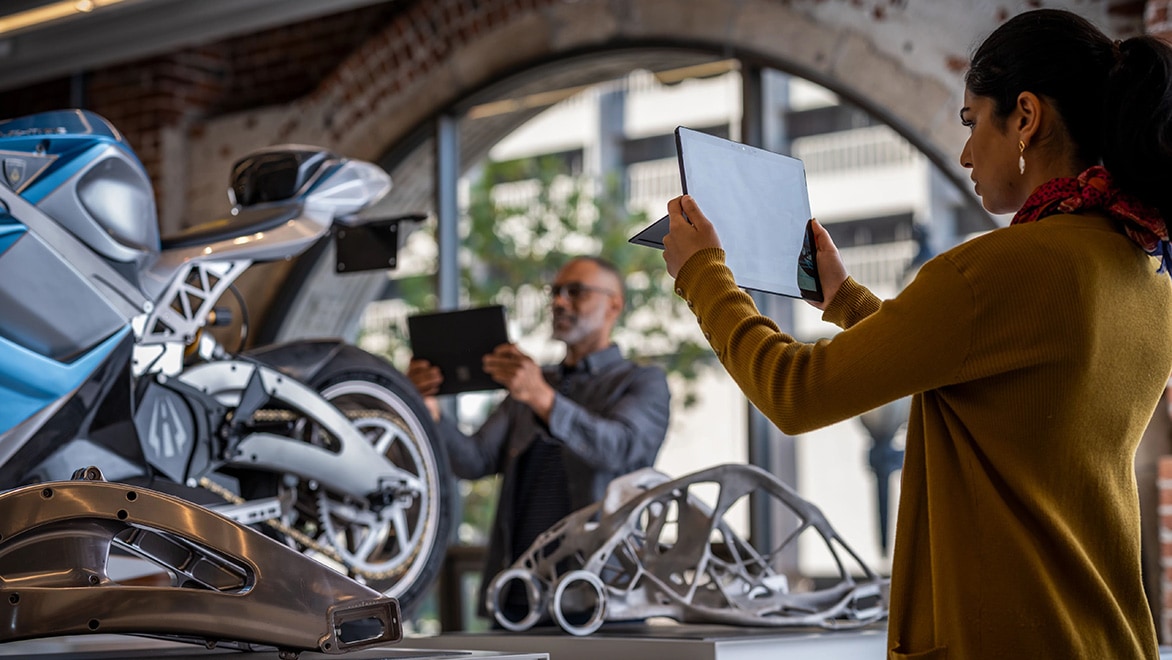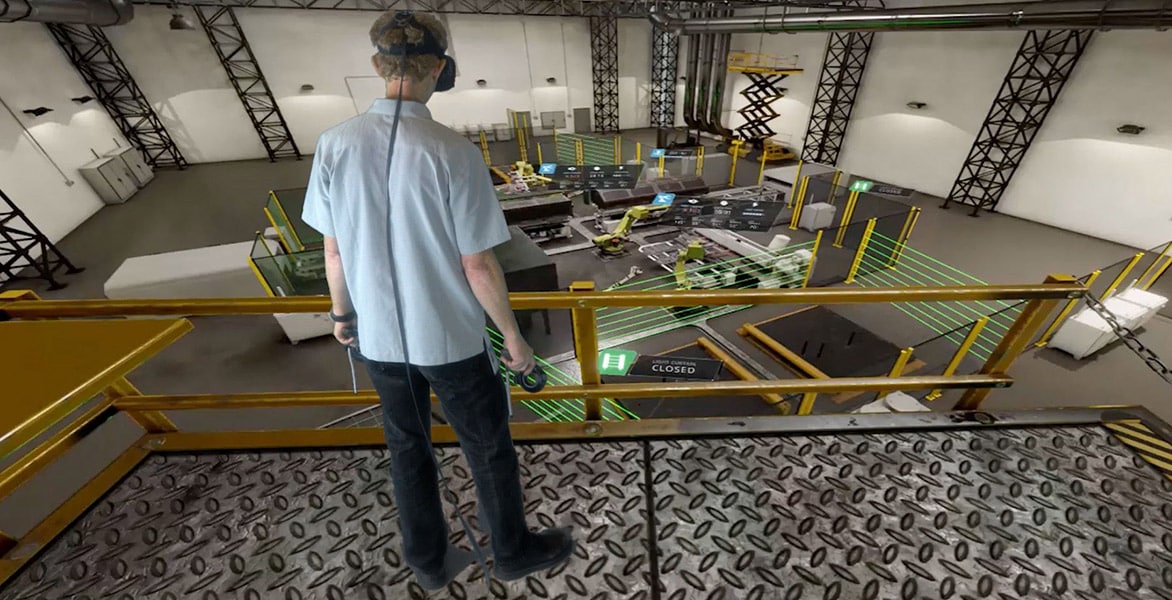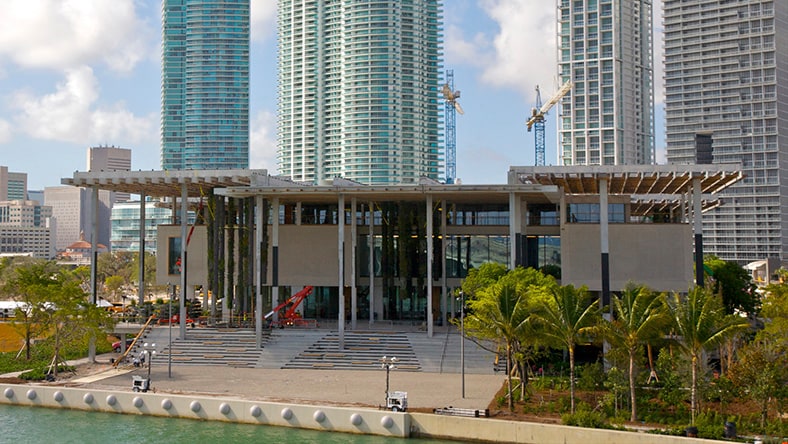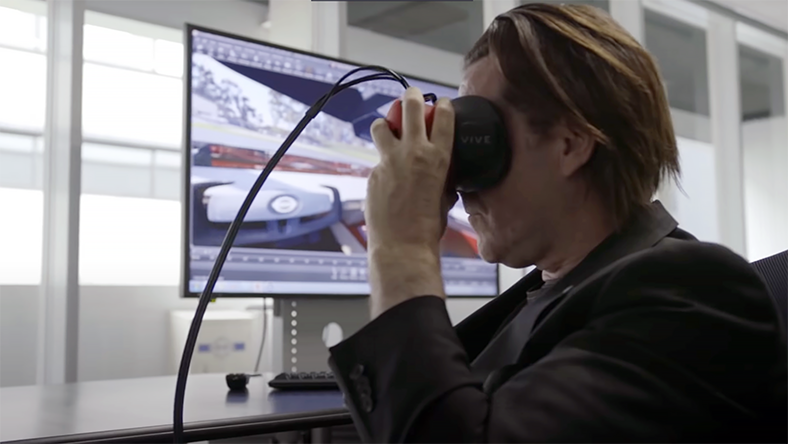& Construction

Integrated BIM tools, including Revit, AutoCAD, and Civil 3D
& Manufacturing

Professional CAD/CAM tools built on Inventor and AutoCAD
Augmented reality (AR) software blends layers of 3D or 2D graphics, video, text, and sound with the user’s real-world environment through AR glasses/goggles or from a device’s camera view. AR in manufacturing can help team members work remotely with seamless collaboration.
Along with other core Industry 4.0 technologies such as the Industrial Internet of Things (IIoT), cloud computing, big data, and AI/machine learning, augmented reality plays a key role in synchronizing technology, processes, data, and human work—essential for smart manufacturing. Unlike the full immersion of virtual reality (VR), AR blends the user’s physical surroundings with overlays of digital information in real time. That makes it possible to integrate AR on the factory floor or to overlay physical prototypes with digital content like 3D modeling data and other information.
Augmented reality software can work on any processing device with a camera, such as a smartphone or tablet. Or, to keep manufacturing employees’ hands free for work, they could use AR or mixed reality (MR) glasses or headsets.
AR’s value to the design and manufacturing industry begins early in the design process, when designers can experience a digital twin of a product in a real-world space through augmented reality software such as Autodesk VRED. They can also use such software to demo the product remotely to stakeholders, simulate testing, and make changes before building a physical prototype.
For machine operators, AR can overlay a digital twin loaded with data on top of any factory machine to access operational instructions, predictive maintenance and repair data to keep production smooth, or even an expert consultant who can provide advice remotely.
This same capability helps firms lay out and plan a product’s assembly early in the process with the help of AR, and that can assure reachability, safety, and ergonomic health for the employees.
AR also makes training new hires and upskilling workers on factory machines and processes conducive to uninterrupted operations. Manufacturing training using augmented reality teaches people virtually, lowering risk and increasing safety. Training can happen on demand to fit employee schedules, with either premade learning content streaming from the cloud or live, remote instructors.
In a fully realized smart manufacturing operation, products will be embedded with IIoT sensors that can send data related to product parts. Quality control staff can then use AR for product inspection and find any concerns related to the product’s data. And in an AR-ready warehouse, augmented reality software gives workers order fulfillment information, automatically scans barcodes, and updates inventory data.
Adopting augmented reality in the manufacturing industry confers benefits throughout the product lifecycle, from initial concept design all the way to customer service.
AR’s visualizations help designers contextualize product concepts in real-world spaces with a reduced need for physical prototypes. This speeds up time-to-market with faster design iteration, validation, and review processes.
Using augmented and mixed reality, designers can demonstrate a product’s digital twin for executives or customers anywhere in the world or consult with a remote machine expert on the factory floor.
Designing with AR reduces physical prototyping, saving time and material resources. And through sensor data and AR, manufacturers can identify and troubleshoot production line issues quicker, reducing downtime.
Using AR in the warehouse can aid with product picking and maintaining inventory, as well as visualizing and fixing other stockroom problems.
AR can provide robust training for new hires and upskilling for existing employees, and is available on-demand from just about anywhere. Trainers can also be off-site.
Manufacturers can plan safer workflows with less setup. AR training is also safer, letting employees practice tasks risk-free and with the use of both hands when using mixed-reality glasses.
3D virtual prototyping software for automotive design—available as VRED Design, VRED Professional, and VRED Presenter
KIA EUROPE
XR—augmented, mixed, and virtual reality—allows Kia to innovate faster, review designs remotely, and gain new insights that inform decisions.
Perez Art Museum, Miami
Museum staff and artists worked with Autodesk tools to create augmented reality art like the gigantic Terrafish for the New Realities gallery.
Nissan Design
Using XR visualization, Nissan designers can sync workflows and experience a new car design within in a day of its initial concept.
Your video and written guide to extended reality: what it is, and its technologies, benefits, and future.
Explore advanced use cases for virtual and augmented reality, including simulated astronaut training and virtual tours.
Watch this quick video explaining what distinguishes the three technologies that comprise XR (extended reality).
Not just for manufacturing, AR can bring comparative benefits to the architecture, engineering, and construction, as well.
French startup Histovery brings the pre-inferno Notre-Dame cathedral back to life with interactive virtual and augmented reality.
Learn how XR technologies bridge the gap between humans and machines in the workplace and make industries more productive.
AR is commonly used for medical and military training. It’s also used in retail for shoppers and workers to get product information, or to see how products like furniture or wall hangings will look in their space.
In manufacturing, AR is used from product design all the way to order fulfillment. It can help designers contextualize 3D models in the real world before production, help factory employees with step-by-step assembly, show factory machine operational and maintenance data, assist quality control when assessing defects, and help with product picking and other warehouse tasks.
AR is important because it creates efficiencies in the product design, manufacturing, and fulfillment processes that save significant time and material resources.
For example, designers can quickly iterate and test different product versions before entering the physical prototype phase. Factories can train workers on fabrication and inspection in a completely safe, virtual environment while reducing mistakes with predictive troubleshooting. And in the warehouse, AR can help manage inventory, guide product picking, and help identify problems.
The biggest difference between AR and VR is the user’s level of immersion. VR completely immerses users in a virtual world, giving them an omnidirectional view of the artificial environment from dedicated VR goggles. AR on the other hand, combines the user’s real physical surroundings with overlays of 3D or 2D graphics, video, and/or text.
AR content is typically less complicated and expensive to produce and consume than VR content. It only requires a smartphone or tablet, or it can also be used with some specialized glasses and a growing number of Head-Up Displays (HUDs) on car windshields.
AI (artificial intelligence) technologies such as speech recognition, natural language processing, machine learning, and computer vision are often included in the functionality of AR (augmented reality) apps, which dynamically superimpose digital graphics and information over the real-world environment on a mobile device or augmented/mixed-reality glasses.
The much larger world of AI machine-learning algorithms and neural networks has a life of its own separate from AR. However, most AR solutions employ some form of AI. For example, speech recognition and natural language processing let AR recognize user voice prompts and computer vision lets AR identify things like objects and people from a device’s camera.





